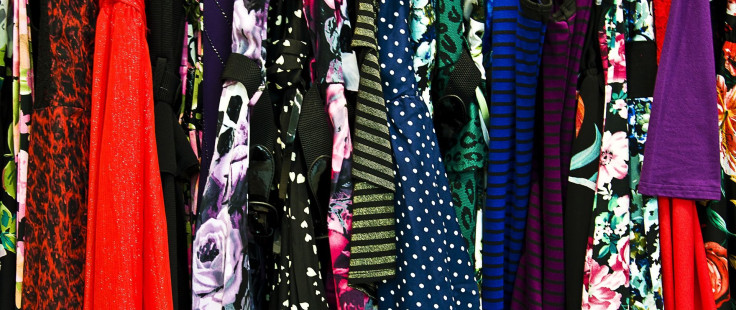Clothing Industry A Big Contributor To Global Water Pollution

The fashion industry is the second most polluting industry in the world after the oil industry. Hard to believe, this seemingly harmless industry that produces those soft and protective fabrics we wear daily is also the second largest industrial destroyer of the environment.
But it's true and documentation exists. A few of the many depressing facts about the harm that the fashion industry inflicts on Mother Nature:
- More than a half a trillion gallons of fresh water suitable for drinking are used to dye textiles every year.
- Dyeing and treating textiles uses many dangerous chemicals. These toxic chemicals are later discharged into lakes, streams and other bodies of water and contribute 20% of industrial water pollution globally.
- Combined with these toxic chemicals, wastewater from clothing factories contaminate drinking water and soil.
- Some of the heavy metals used in dyes are known to cause cancer. They also accumulate in crops and fish through contaminated water and soil.
- It takes 7,000 liters of water to produce just one single pair of jeans. This amount is the equivalent to the amount of water one individual drinks in six years.
- It takes 2,700 liters (713 gallons) of water to grow enough cotton to make just one T-shirt.
- Growing a single cotton crop requires 200,000 tons of pesticides and 8 million tons of fertilizers that pollute water supplies.
- Cotton production uses 2.5% of the world’s cultivated land but uses 16% of all insecticides sold globally.
The process of dyeing, or coloring, fabrics is the most harmful to humans and the environmnent. When clothing is dyed, some 80 percent of the chemicals remain on the fabric. The remaining 20 percent, which is mostly toxic, are discharged into bodies of water or into the ground.
“The textile dyeing and finishing industry has created a huge pollution problem as it is one of the most chemically intensive industries on earth, and the No. 1 polluter of clean water after agriculture," Rita Kant, of the University Institute of Fashion Technology at Panjab University in India, said.
She said more than 3,600 individual textile dyes are being manufactured by the textile industry today. In addition, the industry uses more than 8,000 chemicals in various processes of textile manufacture, including dyeing and printing.
"Many of these chemicals are poisonous and damaging to human health directly or indirectly," she pointed out.
Chronic exposure to dye chemicals has been linked to cancer and hormone disruption in animals and humans. Azo dyes are among the most commonly used and the most toxic. They later transform into cancer-causing aromatic amines. Some amines are carcinogenic in nature, which means they can cause cancer. There is a ban on usage of dyes and pigments that can release such amines.




























